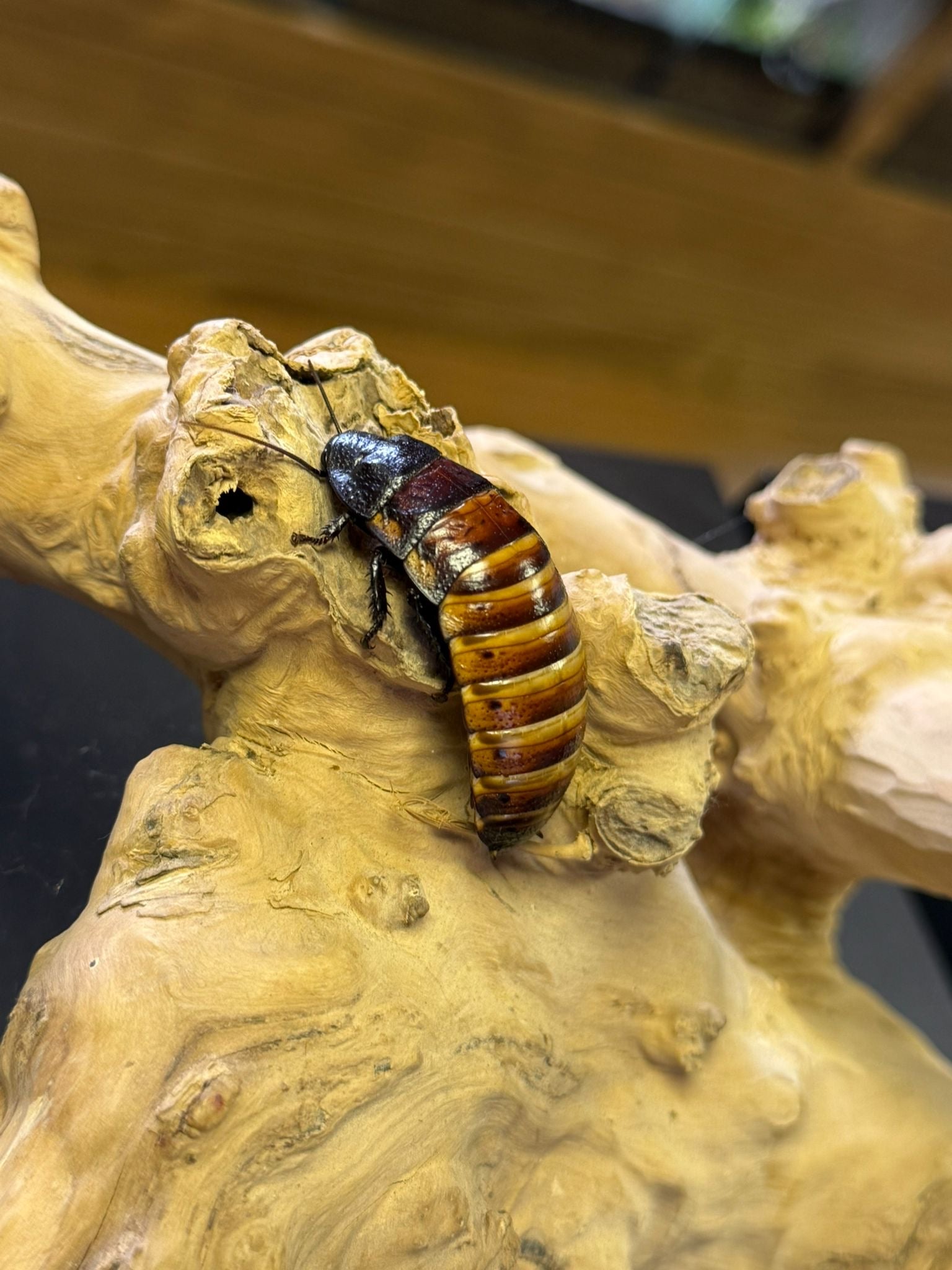Description
Madagascar Hissing Cockroach Care Sheet
Basic Info
• Scientific Name: Gromphadorhina portentosa
• Common Name: Madagascar Hissing Cockroach, “Hissers”
• Lifespan: 2–5 years
• Size: 2–4 inches (5–10 cm)
• Temperament: Docile, easy to handle, non-aggressive
Habitat/Enclosure
• Tank size: 5–10 gallon tank (for a small group)
• Ventilation: Good airflow is important
• Lid: Secure lid is a must — they can climb glass!
Temperature & Humidity
• Temperature: 75–85°F (24–29°C); use a heat mat if needed
• Humidity: 60–70%
• Mist lightly a few times a week
• Use coconut fiber, sphagnum moss, or reptile bark to retain humidity
Substrate & Decor
• Coconut husk, eco-earth, or peat moss (1–2 inches deep)
• Add cork bark, egg cartons, or cardboard tubes for hiding
• Keep substrate slightly moist, not soggy
Diet/Food
• Fresh fruits & vegetables: carrots, apples, bananas, leafy greens
• Dry dog/cat food or roach chow for protein
Supplements
• Calcium powder (optional but helpful, especially for breeding)
Water
• Provide a shallow water dish with cotton or sponge (to prevent drowning)
• Alternatively, mist their enclosure to provide droplets for drinking
Cleaning & Maintenance
• Spot clean weekly (remove uneaten food & droppings)
• Deep clean monthly: replace substrate and disinfect enclosure
• Avoid harsh chemicals — use reptile-safe cleaners or diluted vinegar
Breeding (optional)
• Hissers are livebearers (females carry eggs internally)
• Gestation: ~60 days
• Baby roaches (nymphs) resemble mini adults and molt several times
• Keep sexes together for breeding (males have large, horn-like bumps on pronotum)
Handling & Safety
• Generally safe and clean — they don’t bite or sting
• Wash hands after handling
• Can climb smooth surfaces — be cautious during handling
• They hiss when threatened or mating — not a sign of aggression!
Notes
• Do not release into the wild
• Great classroom or beginner exotic pet
• Not considered pests (don’t infest homes)
Order and get 5 reward points
Earn points by signing up for our rewards program

